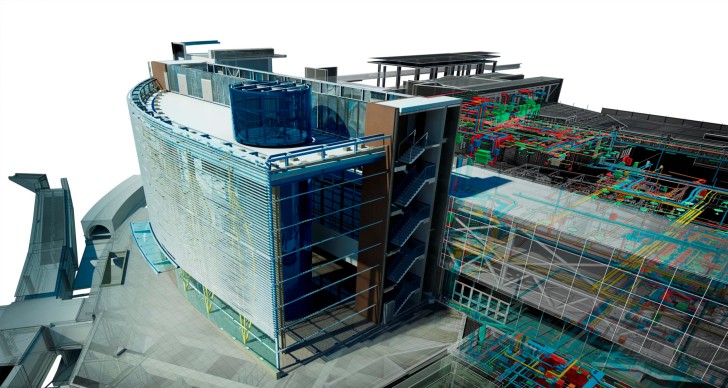For today’s post, we’ve gone over the masterclass that the director of Master’s in Global BIM Management for Infrastructure Projects, Issam el-Absi gave in November last year and picked out some of the key topics discussed.
We can say, today without a doubt, that the “brick and mortar” construction industry is reshaping itself to enter the digital age. Some of the players in the construction industry are still confused and hesitant about the change and new technologies which might make it harder to develop a real digital strategy. However, slowly but steadily, the digital transformation in the construction industry is underway. Issam el-Absi has defined two types of obstacles that the companies opting for digitalization will have to face: first are the social and human challenges and second are the economy- and technology-related challenges.
Social and human challenges
- The availability of competent and good resources - there are not enough engineers who are properly informed of the process.
- Change management - how to make the traditional industry stakeholders change their normal workflows to be more automated, more robust, more digitized.
- Culture change - there are many people who have refused until now to accept digital plans and workflows and consider them as a threat to their careers.
- The social impact of digitalization and digital infrastructure affects people who use more traditional methods in their jobs. We must look to upgrade our resources to face and work in the digital world.
- Transparency - digital transformation will force everyone to work in a transparent mode, in a manner that everything is exposed. And this is a challenge for the construction industry since it’s used to a less transparent environment.
Economy and technology-related challenges
- Technology is moving extremely fast, and society and workflows are not always capable of coping with this reality. There’s a big gap between technology providers and the rest of society.
- The competition between software and technology providers that creates issues of interoperability and process education by technology providers whose understanding of the construction industry is different from that of the constructors.
- ROI - a lot of investors, clients, and decision-makers ask for ROIs defining the benefit of digitalization in their company, how much time and money they are going to save.
- Having standards that are robust and flexible enough to accommodate digital workflows and different BIM methodologies. Having an industrial standard that can accommodate all the different workflows and data types, different requirements.
- The economical challenge grows out of the recession that the construction industry is suffering here and there.
For Issam, the only way to overcome those challenges is through education. Proper training will permit us to become more effective utilizing the BIM technology and bring value and return to the construction process and the client.
BIM integration with IoT
To understand the importance of BIM as an asset of data repository, Issam dedicated some words to the BIM integration with IoT. In modern construction, IoT is becoming more famous and used, as most of the new buildings have sensors that permit them to communicate with the owner or the facility manager. Using IoT in construction will permit to make the performance of the asset more effective, reduce costs, provide a better life for the facility and decrease negative environmental impact. Issam also covers how at CCC they have managed to create a complete integration between IoT and BIM facility management solutions. The result is a comprehensive database that enables the client to make informed data-driven decisions. This robust data layer combined with artificial intelligence solutions and big data analysis permits the clients to effectively analyze the asset performance and give better scenarios for future utilization, make the whole structure more environment-friendly and more comfortable for the occupants.
Towards infrastructures digitalization - BIM and smart cities
Another important aspect of the digital transformation in the construction industry is that of how it reflects on infrastructures and building smart cities. According to Issam, the first step to create a smart city is to make sure the components of this city are smart. So we must start by making the assets smart and make the facility that accommodates the asset smart, make the infrastructure smart. Integrate it all together in a BIM platform will enable the startup of effective smart city solutions. This could be described as the path for effective digitalization of the whole society.


